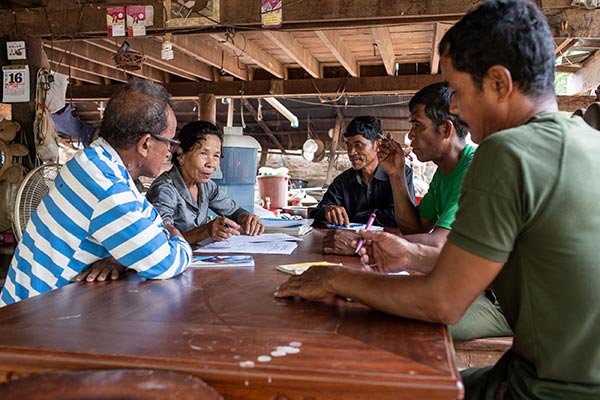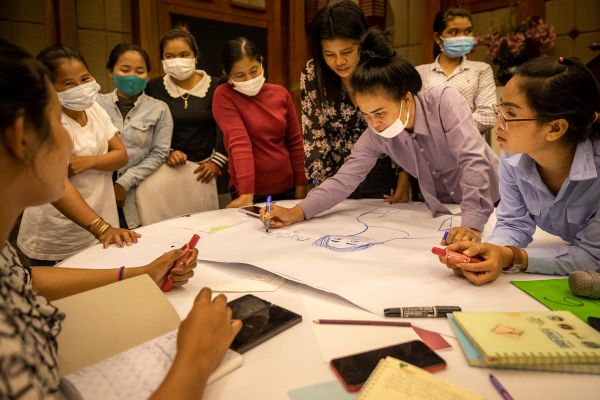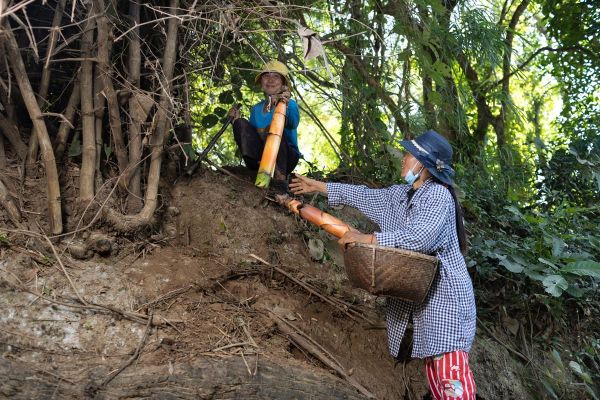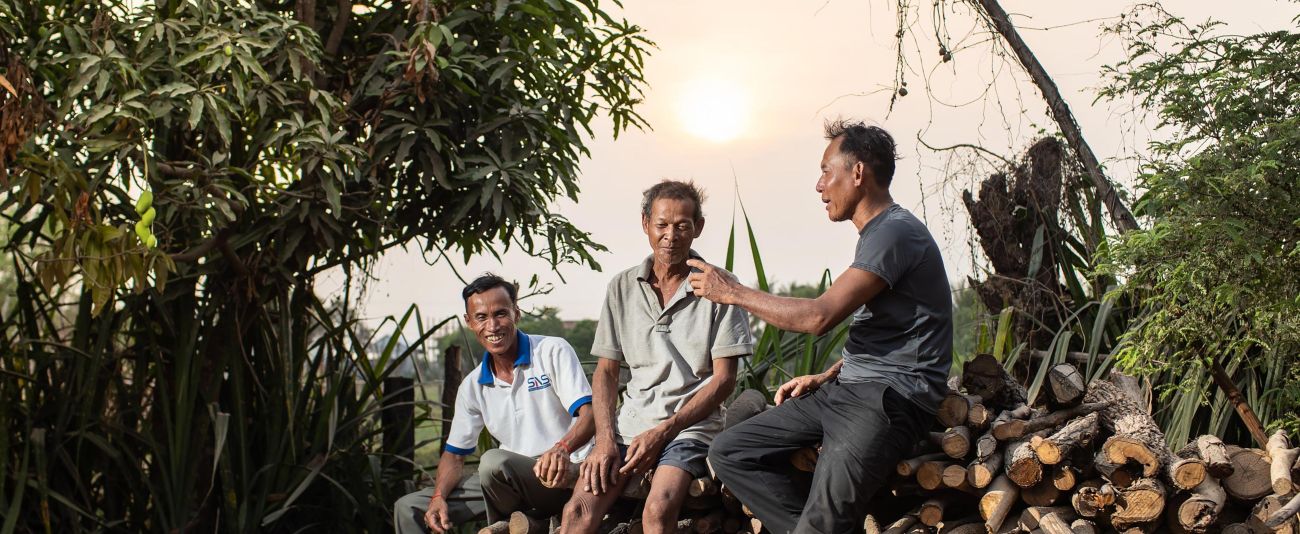
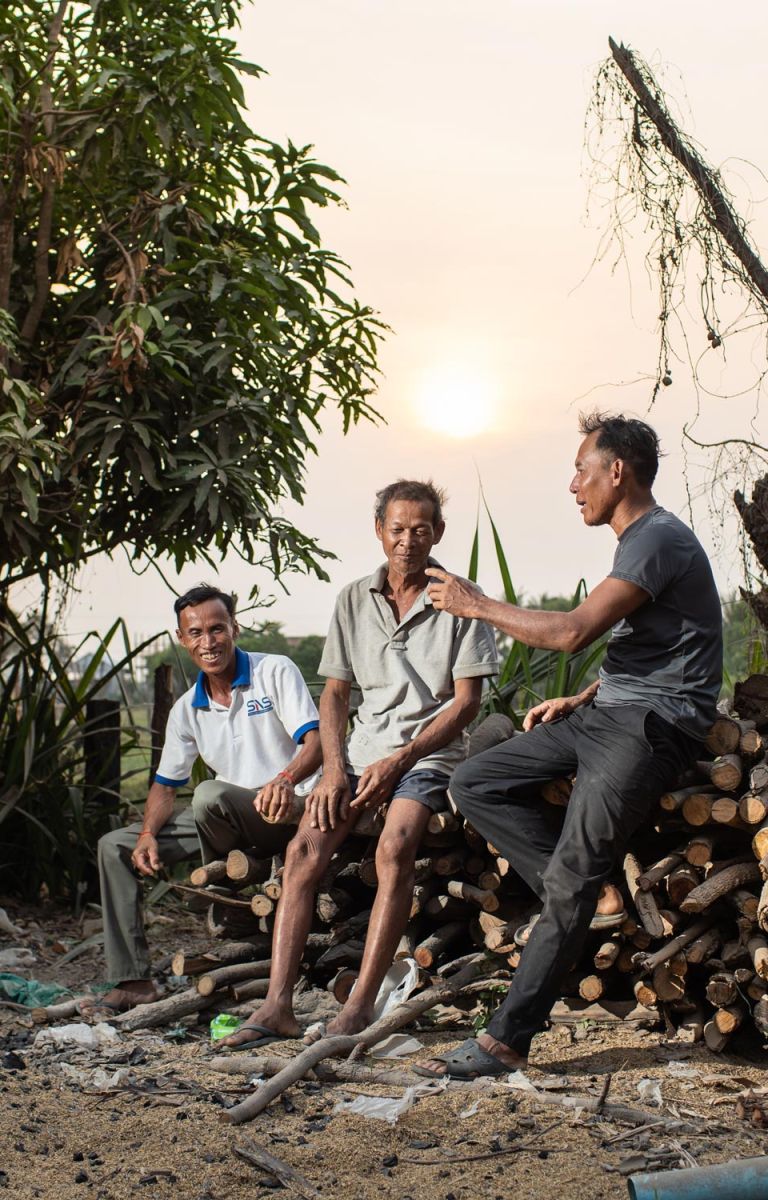
In January 2021, a businessman tried to seize a portion of the O'Plovlok Community Forest in Kampong Thom Province. His workers had dug ditches around 72 of the forest’s 528 hectares before the community members were aware of the threat. As they rushed to defend their forest, tensions grew. The businessman withdrew after a few days, but he later falsely accused community members of violence. Two of them were arrested and jailed.
Fortunately, members of local and provincial community forestry networks were quick to act, contacting government ministries and officials. Thanks to their efforts, the community members were released. The incident highlighted the importance of knowledge and networks in protecting community rights and forest resources. It showed how networks are a key route through which communities managing local resources can share information, find solutions to challenges and influence decision-makers.
Recognizing the importance of collective power, PaFF supported 21 networks with members of community forests, community fisheries and community-protected areas. These included networks at the commune, district and provincial levels as well as three networks specifically for women. PaFF also supported eight multistakeholder platforms through which network representatives can engage with government actors to hold them accountable to fulfil their duties and can advocate for stronger rights, action against law-breaking and supportive policy reforms.
Connecting stakeholders
PaFF’s support included training and advising network members on advocacy, networking and the use of digital tools, such as Telegram chat groups. The partnership also trained network members on how to support their constituent groups in setting up and managing credit schemes and mini trust funds (see chapter 4).
"The network gives me opportunities," says Keo Vanna, chief of the Kampong Thom Provincial Community Forest Network. "I am able to build my capacity through trainings and I can share with and learn from different people, inside and outside the country. I can use what I learn to help my constituent communities."
PaFF funded network and platform meetings and other stakeholder-coordinating functions. It also engaged with commune councillors elected in 2022 to raise awareness of their duties in relation to community-based natural resource management, such as their responsibilities regarding law enforcement.
In 2022, PaFF set up a network for women participating in community forests in collaboration with the Forestry Administration’s gender working group. It now has 33 members from 30 community forests in nine provinces. And PaFF supported networks for women who are members of community fisheries and community-protected areas.

“The Community Forests Women’s Network changed my perspective and opened my eyes to the importance of women in community forestry.” — Keo Vannai, Chief, Provincial Community Forests Network
With PaFF’s support, each women’s network met two to four times a year to discuss members’ progress and challenges. PaFF provided training on forest-related laws and regulations, forest management, how to formalize community forests and community-protected areas, how to use information and communication technologies and how to record and report forest crimes.
“The Community Forests Women’s Network changed me, from a person who wasn’t willing to speak up to one who speaks for others,” says Keo Vannai, a member of the Tropaeng Prey Community Forest in Kampong Thom Province. “It has changed my perspective and opened my eyes to the importance of women in community forestry.”
Accountability and advocacy
The networks and platforms have proven to be crucial routes through which communities can report illegal activities and hold duty bearers accountable to intervene. In 2022, most (76 percent) of the 311 cases reported by PaFF-supported communities were reported through subnational multistakeholder platforms with the support of networks.
These structures enabled constructive dialogues between rights holders and duty bearers at the subnational and national levels. For instance, in 2022, the Provincial Community Forests Program Coordination Committee in Kampong Thom organized a forum in which representatives of community forests networks, the Forestry Administration, local authorities, non-governmental organizations and the courts clarified roles, rights and responsibilities in the context of community forest patrolling and law enforcement.
Networks have also successfully advocated for the needs of their constituents. For example, in 2020, the Ministry of Environment provided 23 cows, 30 buffaloes and 70 piglets to communities managing three community-protected areas. This followed a request from leaders of the Northern Tonle Sap Regional Community-Protected Areas Network to support livelihoods in those communities.
Representatives of community forests, fisheries and protected areas have used their respective networks and multistakeholder platforms to recommend revisions to legal frameworks under Cambodia’s ongoing decentralization reforms. For example, draft amendments to the Forestry Law include provisions that would increase the duration for community tenure from 15 to 25 years and require community forest areas to be registered. This amendment will provide stronger legal protections against conversion to other land uses.
Overall, PaFF contributed to the drafting or revision of 17 policies, strategies, regulations or guidelines relating to community-based natural resource management. These include the landmark Environment and Natural Resources Code enacted in June 2023 and other reforms that await adoption.
“PaFF aligned well with Cambodia’s policy goals relating to decentralization, forest protection and progress towards to the United Nations’ Sustainable Development Goals,” says Vong Sopanha, Deputy Director-General of the Forestry Administration. “It has been effective at strengthening capacities and policies enabling communities to benefit from participating in the Royal Government of Cambodia’s different models for community-based natural resource management.”

